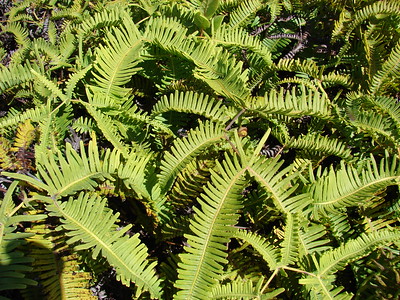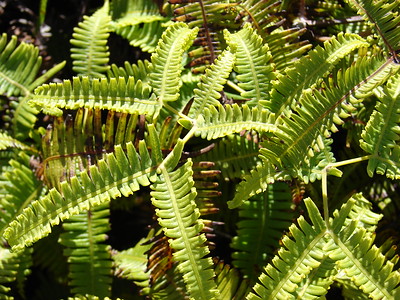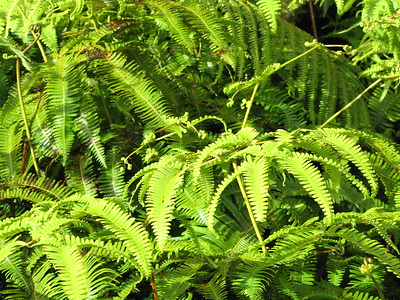Staghorn ferns have an otherworldly appearance. The plants feature two types of leaves, one of which is reminiscent of the horns of a huge herbivore.
These plants are epiphytes, which means they grow on other plants rather than in the ground. The wide, flat leaves provide a home for smaller plants to get their foothold on. They often use staghorn ferns as an anchor while the heavy plant hangs freely from trees and rocks. How To Grow A Staghorn Fern: Full Guide.
Table of Contents
Staghorn Fern Plant Identifying Characteristics
The most notable features of staghorn ferns are their large fronds in shades of green or brown with brown veining . Most variants have fleshy roots that hang down in bunches visible at the base of the plant near soil level.
Today’s Homeowner Tip: Staghorn Fern Quick Facts Scientific Name(s): Platycerium Species , unicornis Species.
Common Name(s): Staghorn Fern , elkhorn fern Family: Polypodiaceae
Sun Requirement(s): Bright light to full sun.
Water Requirement(s): Keep soil evenly moist (but not soggy), especially during active growth in spring and summer.
Temperature Requirements: Warm, 50-85°F; will tolerate a minimum temperature of 42°F Frost Tolerance: Hardy at temperatures above 40°F
Origin: Australia, New Zealand, Southeast Asia US Gardening Zone: 7 through 10 (find your zone; further info on plant hardiness)

Types of Staghorn Fern
There are many different kinds of staghorn fern with various leaf shapes and sizes. Most varieties do best with indirect sunlight and high humidity.
Staghorn Fern Growing Conditions
Water Staghorn Ferns need evenly moist soil, especially during the spring and summer growing season. Apply water to the soil at the base of the plant, rather than directly on its leaves.
This helps keep rot from forming within the staghorn fern’s crown where leaf stems meet their fronds. With time, these plants can also adapt to drier conditions particularly if they’re hung near an outside wall or other heat source.
Fertilizer Fertilizing your staghorn fern too frequently can encourage it to grow lush foliage at the expense of new antlers (its fruiting bodies). Feed this plant once every three to six months with a balanced, water-soluble fertilizer. Mix according to package directions and apply at the base of the plant.

Bonsai Gardening Full guide, Care Tips & Benefits
Humidity Staghorn ferns prefer high humidity. Dry air encourages brown leaf tips along the fronds. If you notice this problem, mist your staghorn fern once per day or move it to an area that receives more moisture in the air.
Two types of staghorn fern
One type grows best in bright light , while the other prefers partial sun conditions. Check your plant labels for specific requirements before repotting them in springtime. Keep your staghorn fern out of direct sunlight, which can scorch its leaves.
How to Grow a Staghorn Fern?
The staghorn fern is an unusual houseplant with two types of leaves. The fertile fronds are green and shaped like elk antlers, while the sterile frond is flat and leaf-like. These plants need bright light to prosper indoors. When grown in low light, they grow lanky and spindly.
Staghorn Fern Plant Care
Light: They will tolerate a wide range of indoor lighting conditions from full sun to low light but prefer brighter light. If you rotate them occasionally, they will produce symmetrical crowns.
Water: Water thoroughly then allow soil to dry out slightly between watering; do not let the plant sit in water as it does not stand up well to “wet feet” and may rot
Temperature: They require warm temperatures 60-75°F/16-24°C; low to mid 70s F is ideal.
Humidity: High humidity (60% or above) will help the plant form antler fronds and prevent browning of leaves; you can use a pebble tray or room humidifier to maintain high humidity.

How to grow Acoma Crape Myrtle: Benefits, Uses, Care & gardening tips
Soil: Use a well-draining, acidic potting mix with perlite, clay pellets, or coarse sand added for additional drainage as part of the soil mixture.
Fertilizer: You can fertilize your plants twice monthly with half strength balanced liquid fertilizer; do not overfeed as this causes lots of leafy growth at the expense of antler development.
Propagation: They propagate from spores, which are produced on the undersides of the leaf-like fronds in a small cup-shaped structure known as a sori or mitosis.
When these structures mature, they produce tiny black dots at the tips of each frond which can be removed and grown independently.
Calla Lily Care – Tips On Growing Calla Lilies